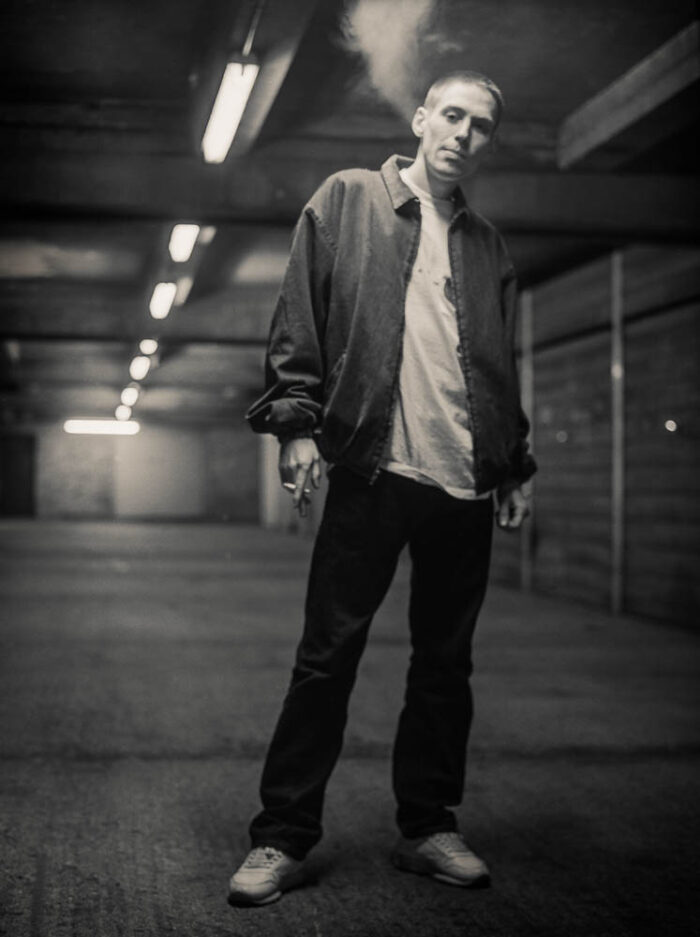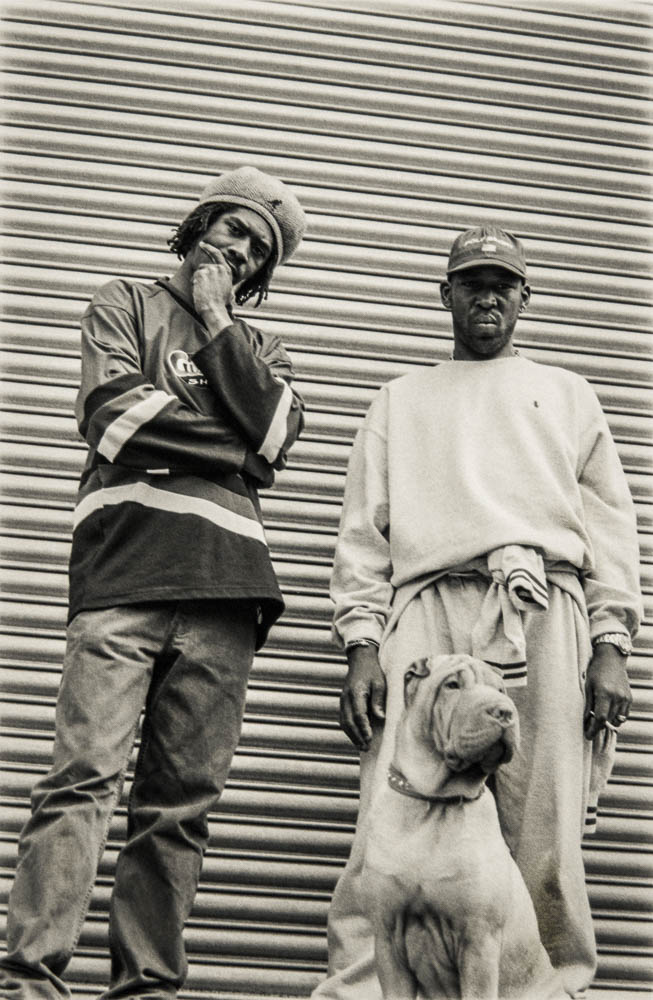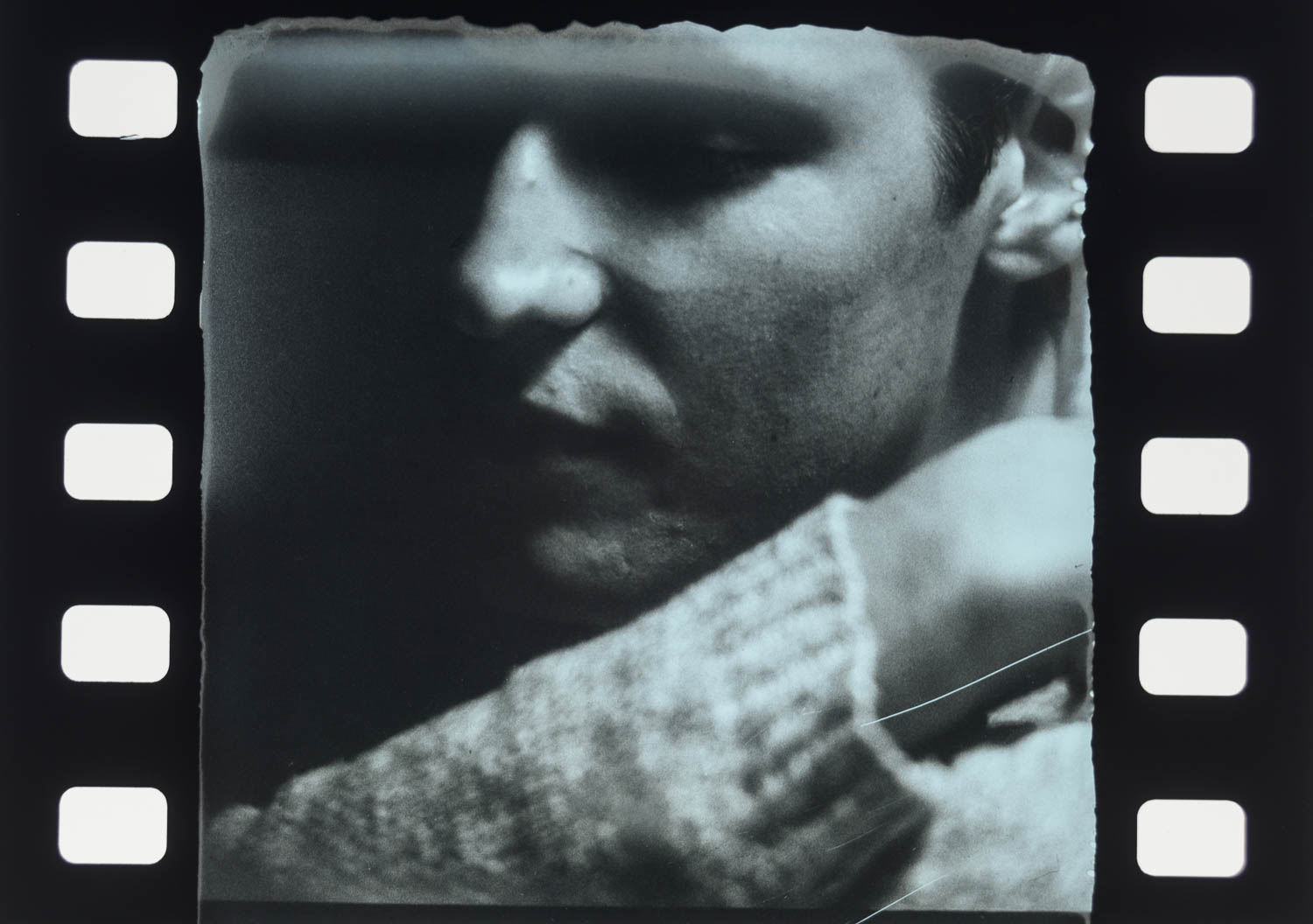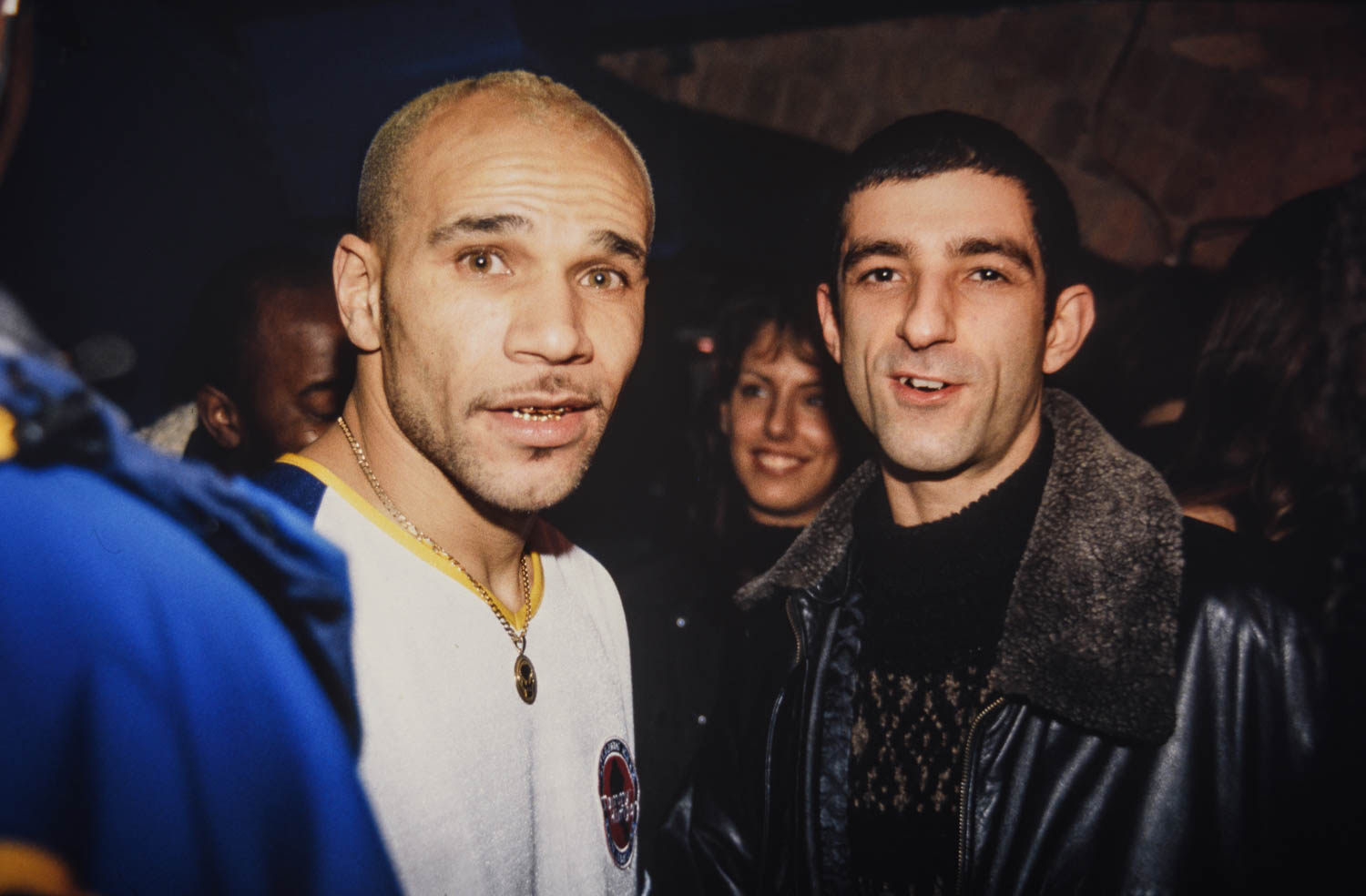
London’s Early Drum & Bass Scene: A Photographer’s Story
Discovering Drum & Bass Through the Lens
I first started photographing the London Drum & Bass scene in the mid-1990s, mainly for music mags of the time like Musik, Generator, Wax and Touch. But my love for bass-heavy music started way earlier. I was already into the all night reggae sound system sessions of Jah Shaka, Unity Hi Fi & Abashanti.
I was lucky to have grown up in the early days of the underground warehouse scene in London in the 80’s. It had this proper DIY attitude: funk, hip-hop, reggae all mashed together in dark, half-legal spaces….the antithesis of mainstream clubs of the time.
From Reggae Sound Systems to Early Jungle & Drum and Bass
I went to New York for a while as rare groove had lead to my love of Hip Hop, and when I came back, house and the rave scene had completely taken over. For a few years I photographed the leading house and techno DJs and producers for editorial features and record labels. But something new started emerging — a sound built out of reggae, dub, dancehall and hip hop, with it’s faster BPMs, darker atmospheres, chopped-up breaks and bass-heavy music…. Jungle and Drum & Bass was taking shape.
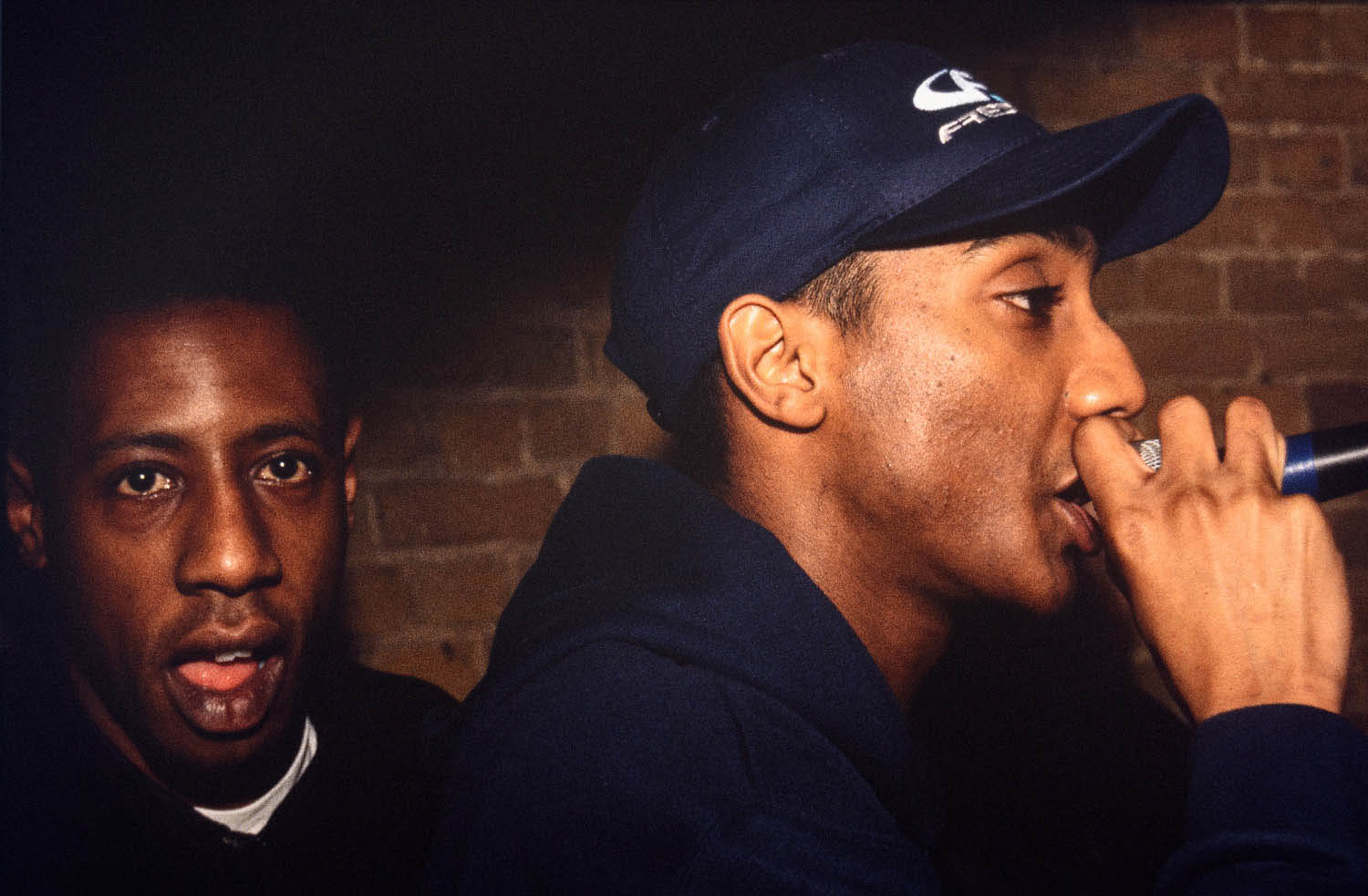
For me, Drum & Bass felt raw and dark, like the streets around Elephant & Castle where I was living and had my first studio. It wasn’t just new music — it was a new subculture with artwork, flyers & pirate radio shout-outs combined with sound system culture. There was an attitude of experimentation & independence …of pushing boundaries and resisting commercialisation. It carried the same DIY energy as the early warehouse scene that defined my early 20’s.
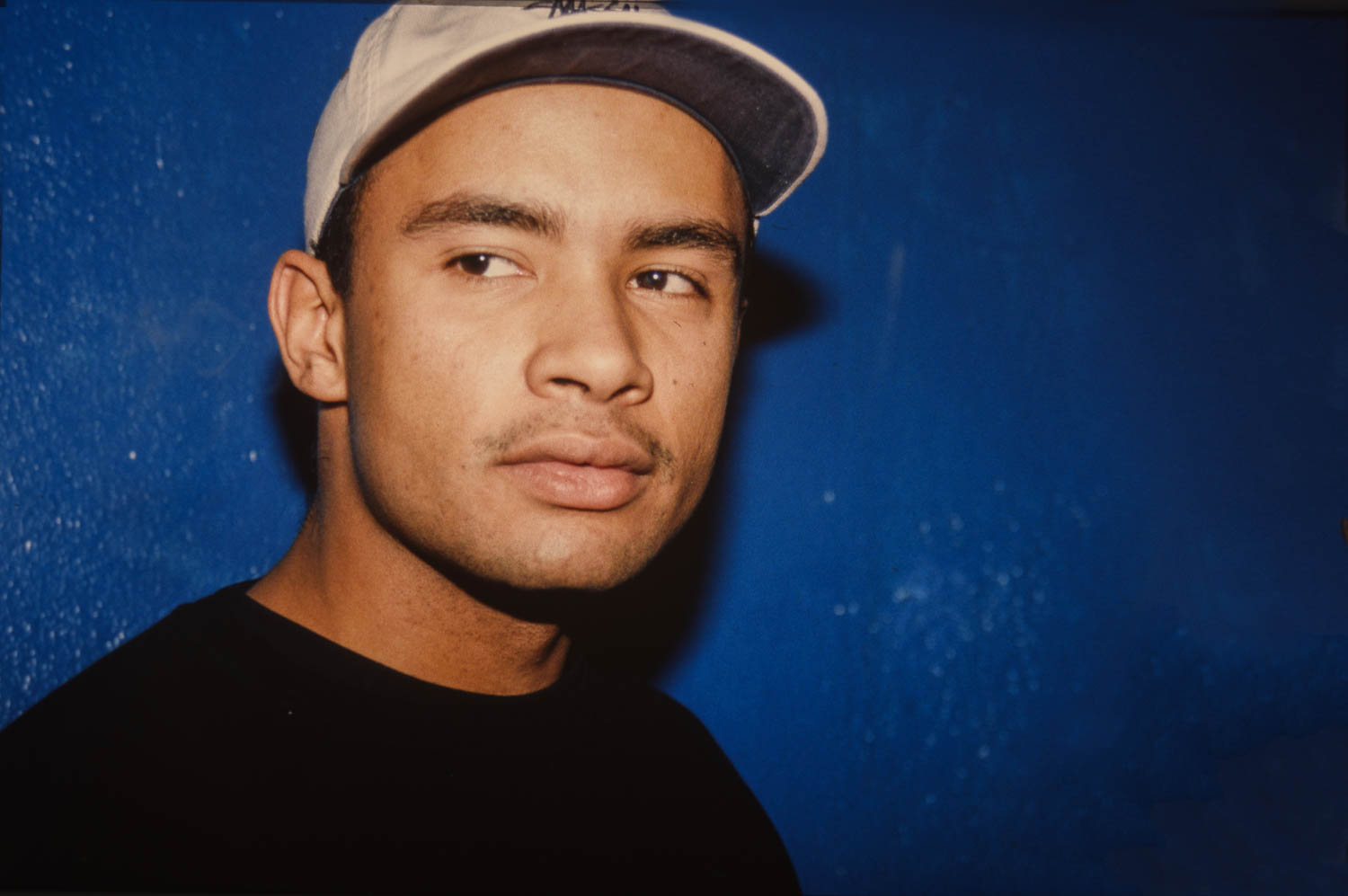
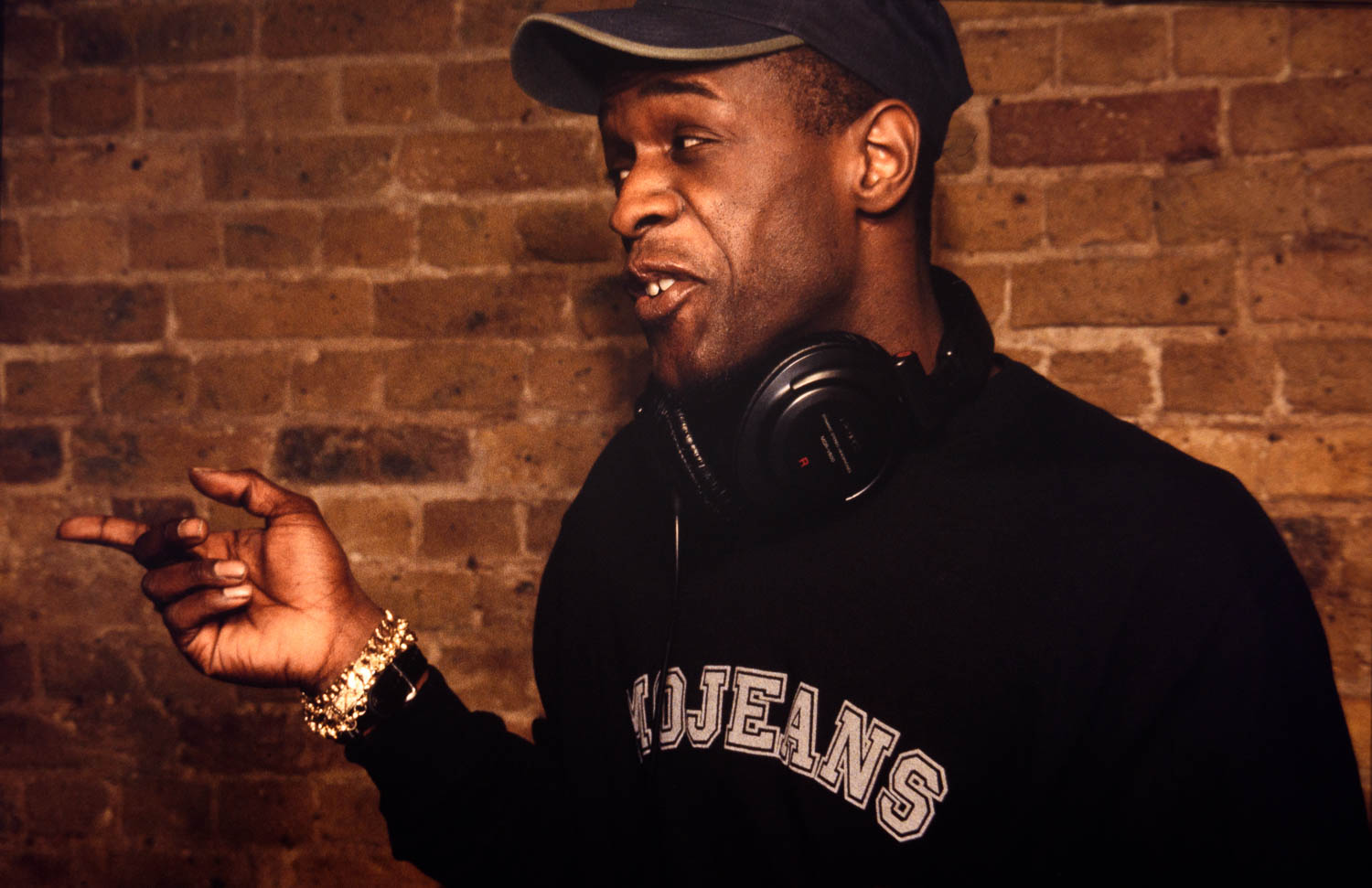
Photographing Jungle Culture & the birth of Drum & Bass in the 1990s
As a photographer I watched & experienced the constantly shifting subculture & branching genres over a very short period: from Ragga & Jungle with its heavy dancehall influence to the more experimental, ambient, jazzy sound of liquid Drum & Bass.
My take on Drum & Bass photography was usually dark, raw and grainy. I loved shooting black and white film — I could shoot it, develop it, and print it myself. That meant long nights in my darkroom in a space no bigger than a cupboard, trying to meet magazine deadlines. The pay was terrible, but the experience was priceless.
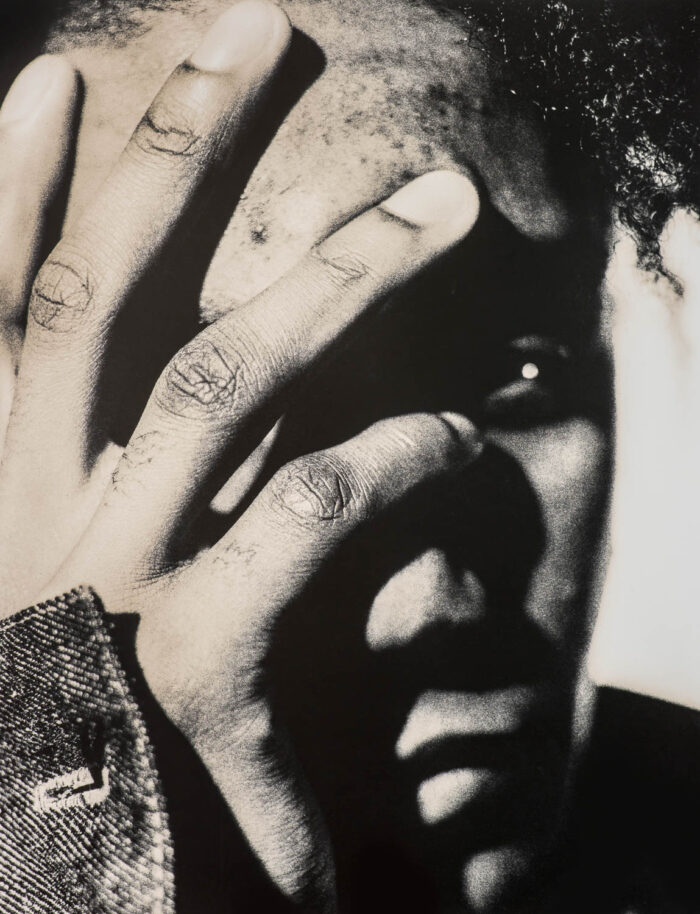
I experimented with weird film stock and processes, chopping up negatives and overlaying transparencies . Sometimes the “mistakes” — scratches, uneven tones and added textures — for me ended up telling the story better than a clean, sharp photo ever could.
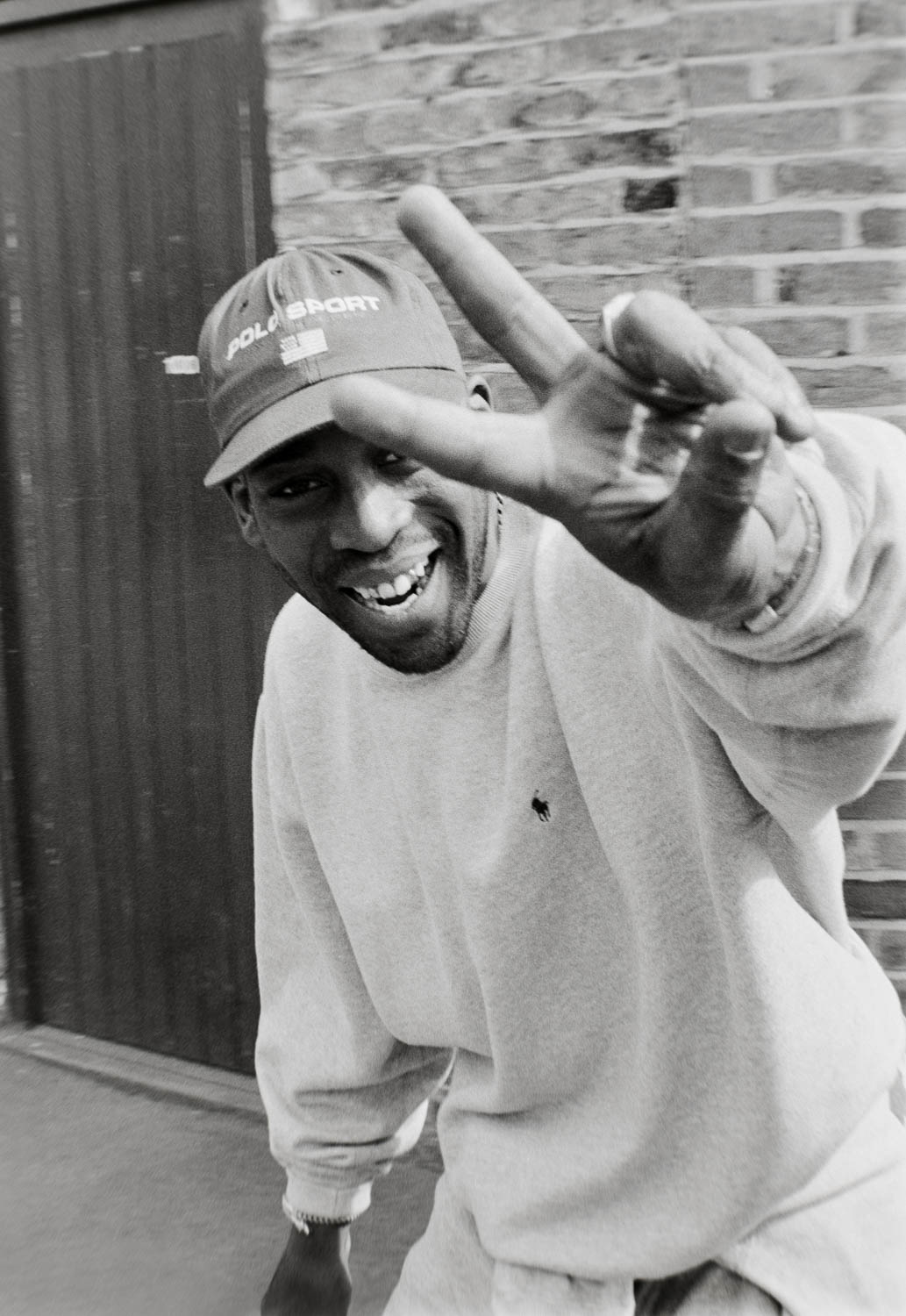
A lot of the time, I handed over final prints, film and negatives to art departments and never saw them again. What’s left now is just a fraction of my archive — the scraps I managed to hold onto and not particularly well curated.
The early D&B club scene in London
Clubs back then were often a nightmare to shoot in with dreadful lighting. Digital cameras with astoundingly high ISO ranges were a thing of the future. Most of the rooms were pitch black, and I hated using flash. To me, flash ruins the atmosphere — as a punter I still dislike people using lights and phones at gigs and clubs. So I pushed film to the limit, sometimes so far it came out ridiculously grainy and almost unusable, but to me, that roughness sometimes matched my feelings about the sound.
I usually went to clubs to enjoy the music rather than go as a photographer and “document” what was happening. Metalheadz at the Blue Note on a Sunday in Hoxton was a big favourite.
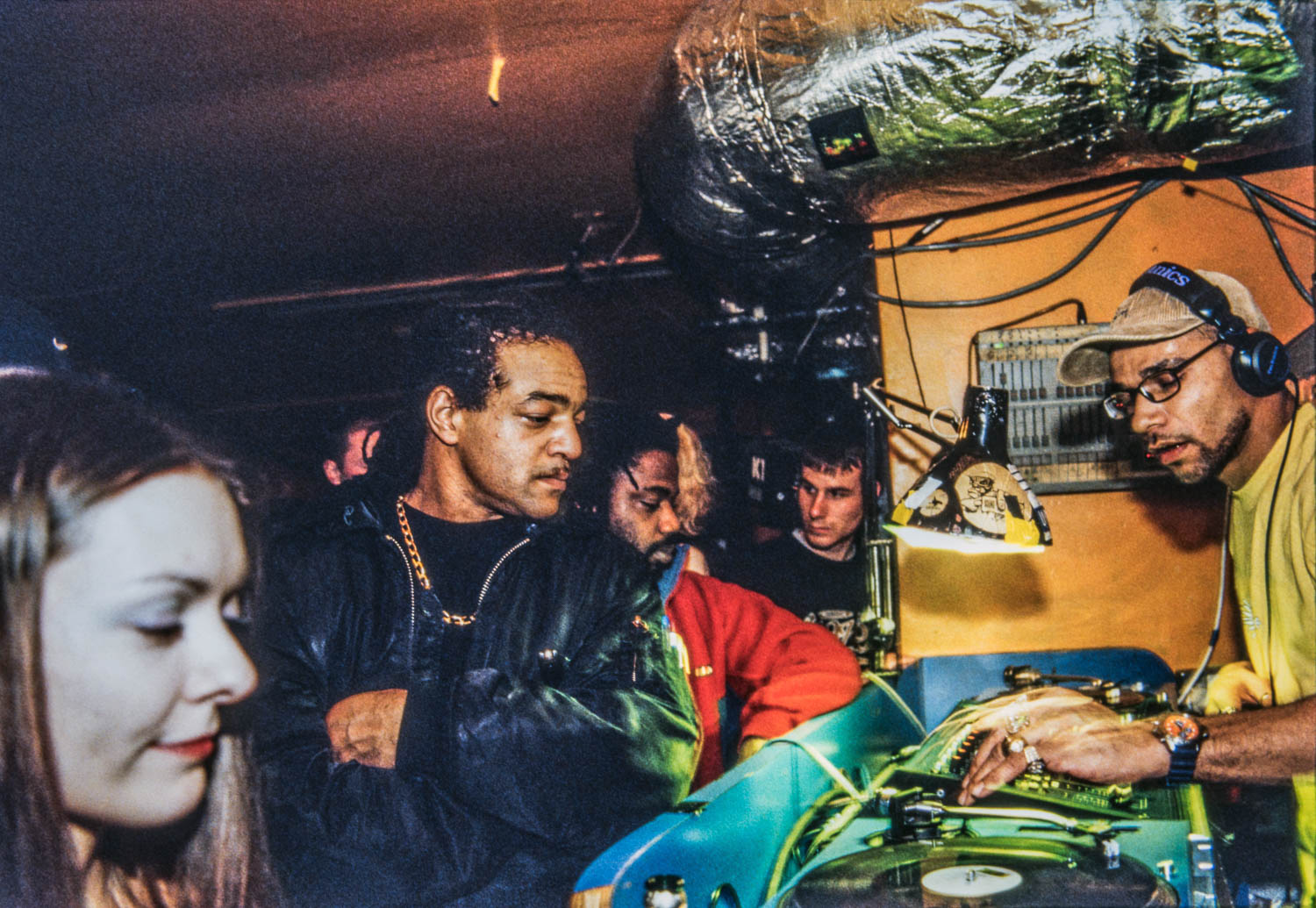
Pirate Radio: The Voice of Jungle & Drum and Bass
Pirate radio stations were crucial around that time as they were playing all types of music from hip-hop, reggae, soul, and funk, especially playing music that wasn’t yet accepted in mainstream media like Jungle and Drum & Bass. Broadcasting illegally from tower blocks, these stations weren’t just about music — they were about identity and resisting the commercial norm.
Stations like Fantasy FM and Kool FM pushed the culture forward, promoting parties and launching careers. Even Kiss FM started as a pirate in ’85 before going legal in ’89. By the mid-90s, Fabio and Grooverider were hosting their legendary show on Kiss, giving Drum & Bass a wider platform.
Grooverider at Kiss FM
I photographed Grooverider one night at Kiss FM while he was live on air, before jumping in a car with him to go to a series of gigs across the country. I have no clue where we ended up — I just remember endless hours on the road. Sadly, those negatives of that epic trip are long gone.
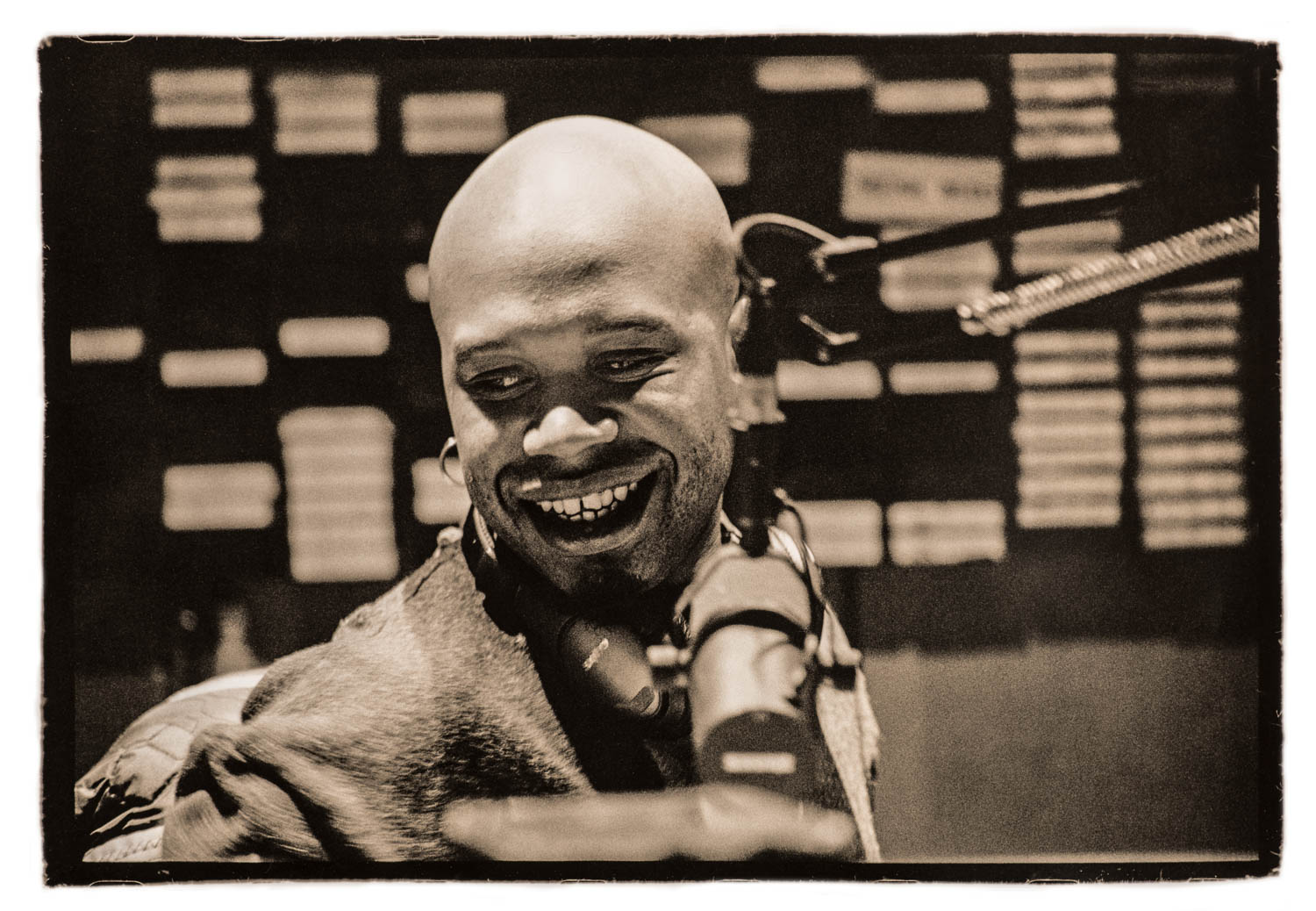
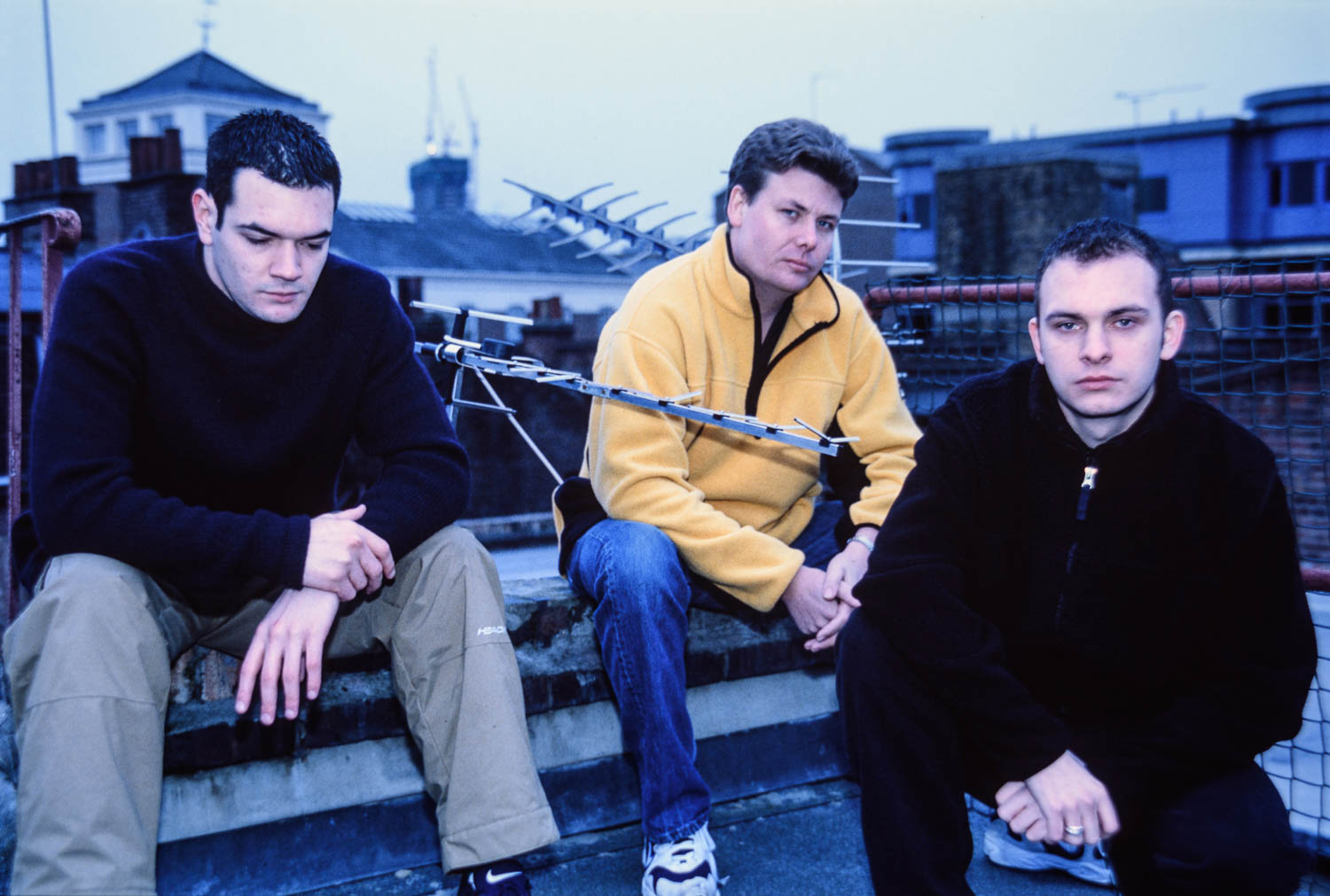
Shooting on a freezing miserable December morning on a rooftop in South London with Andy C, Shimon & Ant Miles (Ram Trilogy) as the editorial brief had something to do with “pirate radio”.
In 1993 RAM Records released the D&B classic “Valley of the Shadows” under the alias Origin Unknown and I still remember the first time I heard it and how it blew me away.
Photographing Drum & Bass Icons
Goldie & Metalheadz
By ’94, Metalheadz became a label renown for it’s innovation with harder, darker, more experimental tracks.
Goldie and Rob Playford’s Moving Shadow studio was in Soho and I was lucky to spend the whole afternoon there watching a new track evolve as Goldie played invisible instruments to Rob Playford in the way he wanted things to sound.
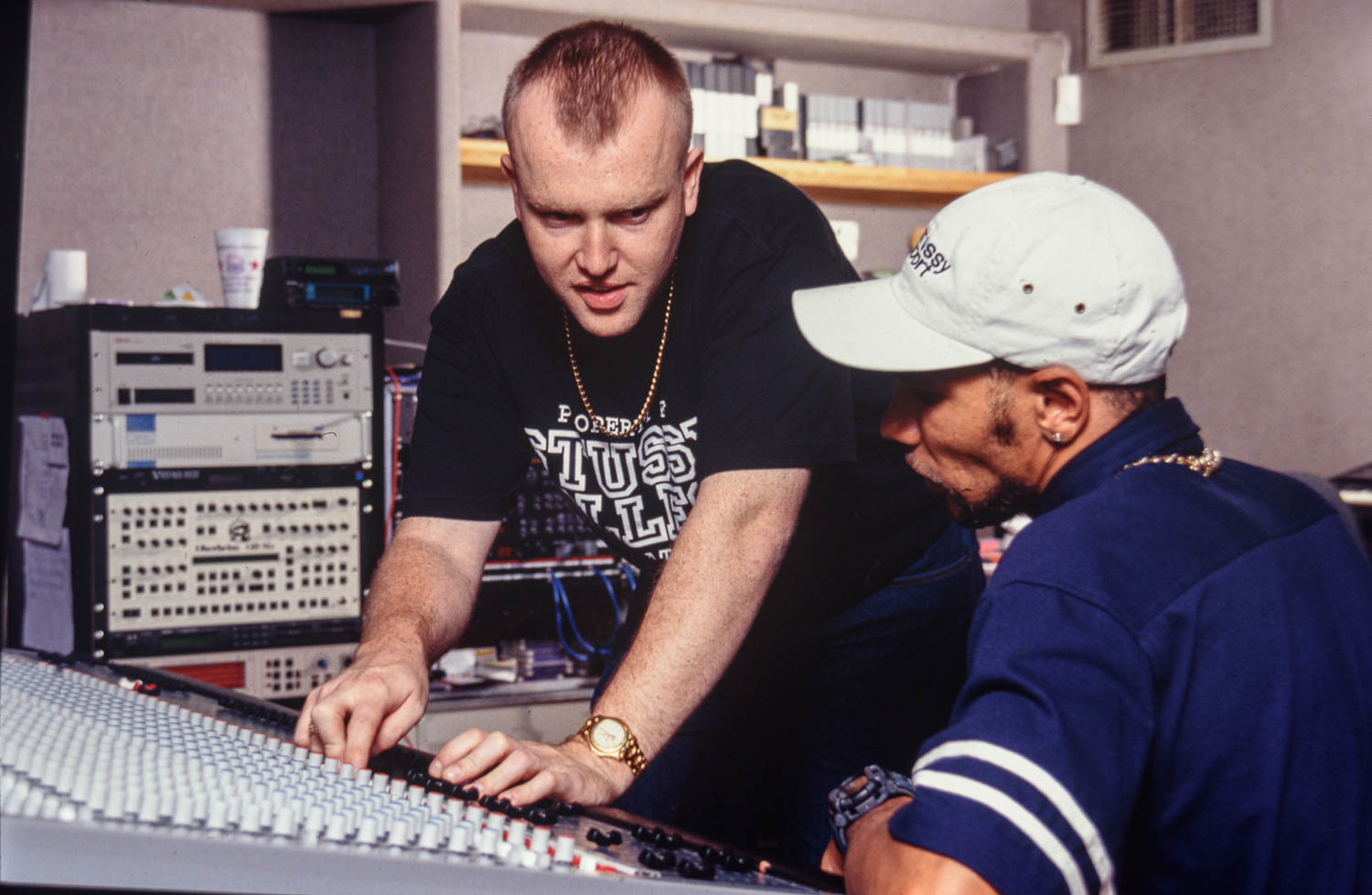
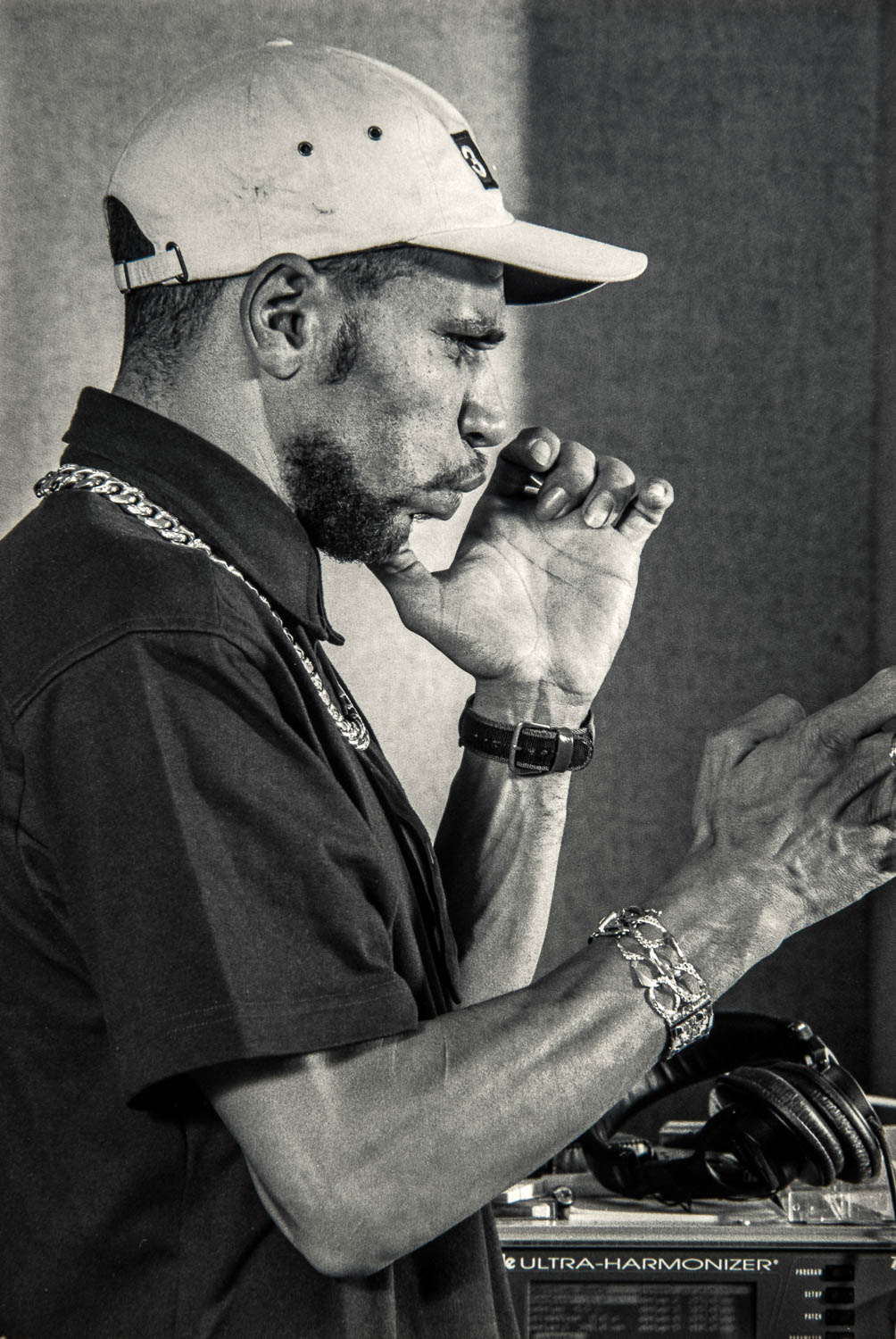
I used to shoot Polaroid 55, which had a negative that needed to be fixed before it could be used to print from. I discovered that by sticking the polaroid negative inside my metal filofax I didn’t need to carry chemicals with me to shoots. Once back in the studio I ended up with a slightly distressed negative that I loved to use when I was shooting the D&B scene. The neg was perfect for Lith printing and the final print had a rough edgy feel with a warm tone.
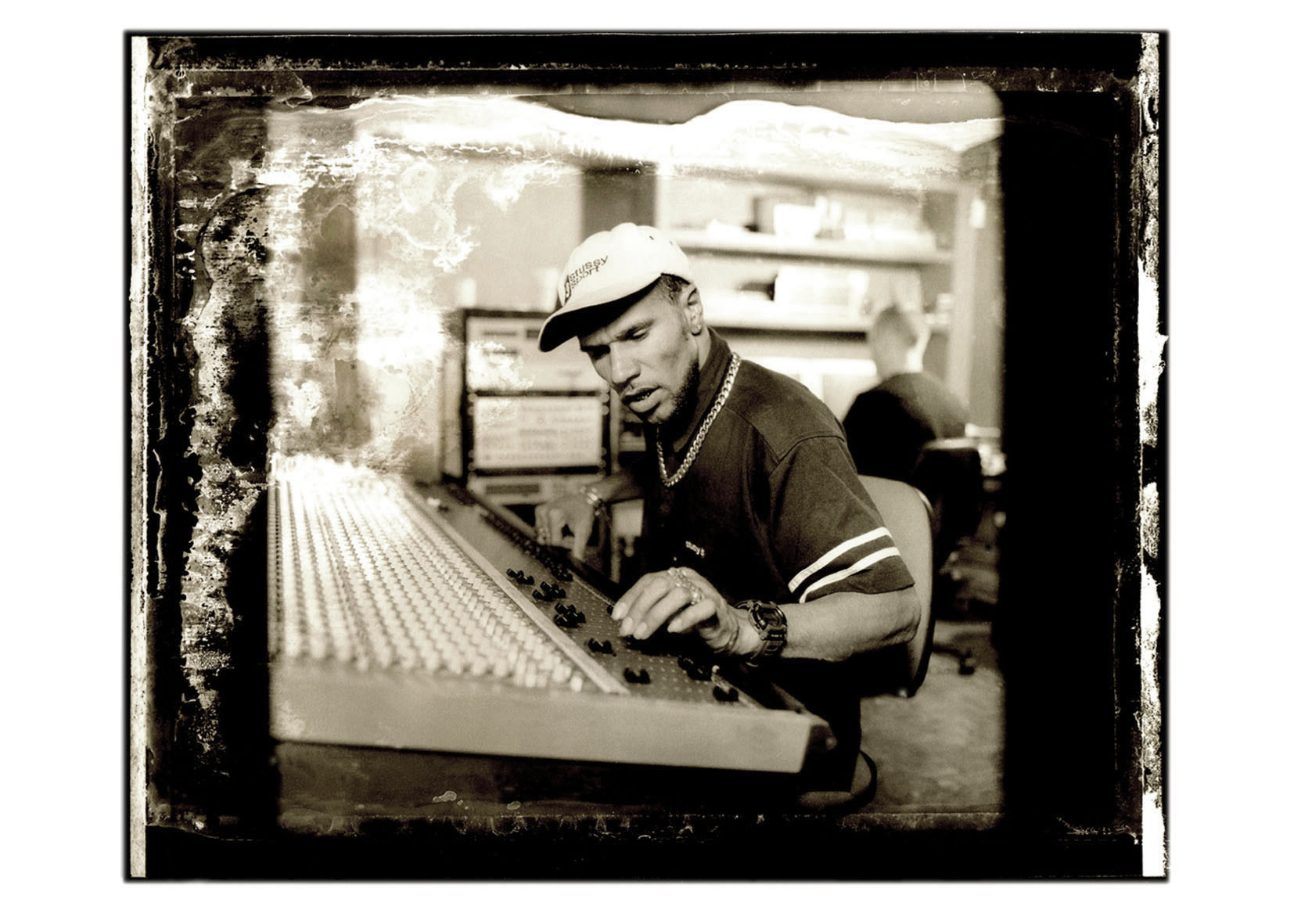
DJ Hype & Ganja Kru
DJ Hype was a driving force and one of the biggest names in jungle and drum and bass, establishing the influential Ganja Records label and forming the Ganja Kru with DJ Zinc and Pascal. They released iconic tracks like “Super Sharp Shooter” by DJ Zinc – a dancefloor anthem.
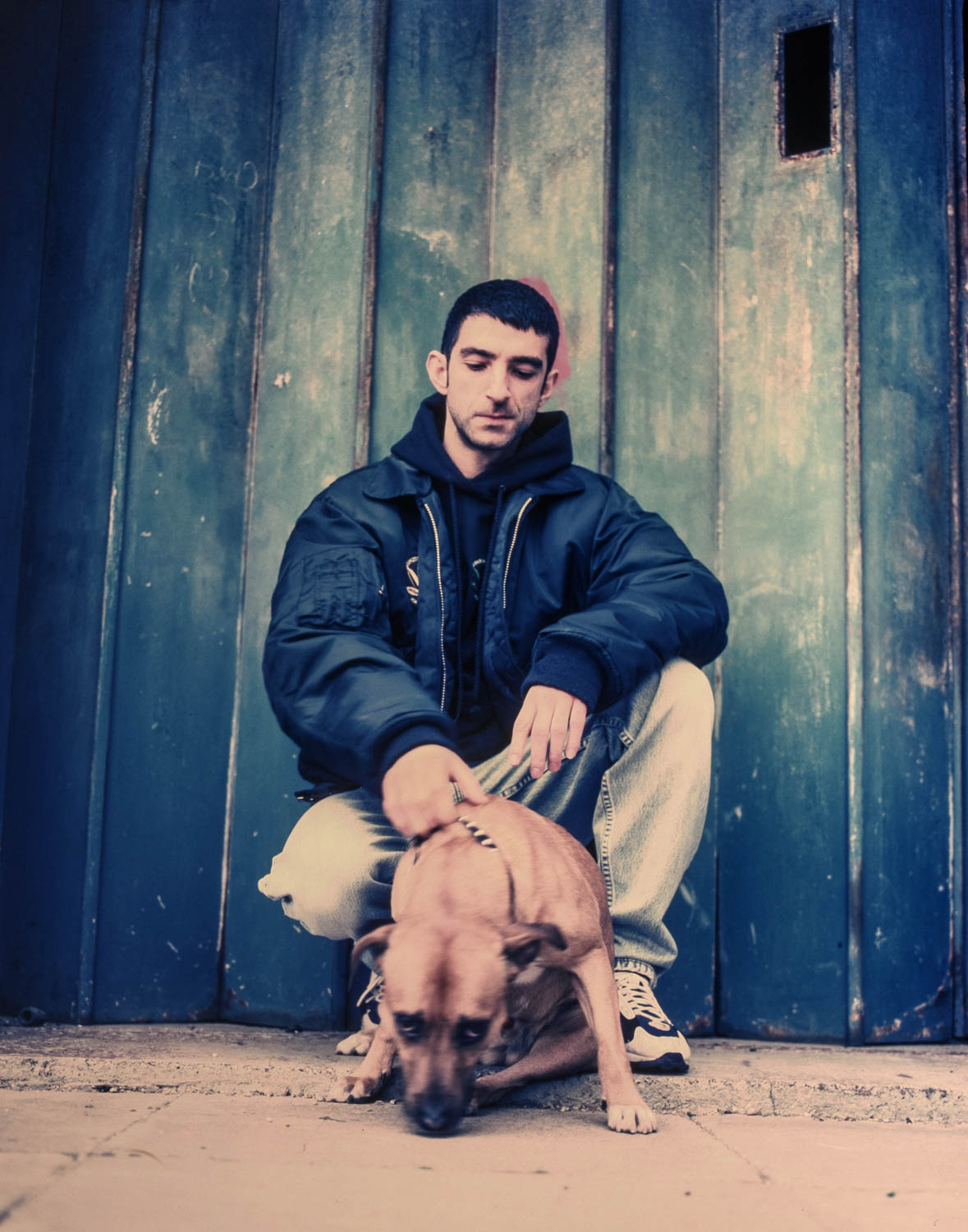
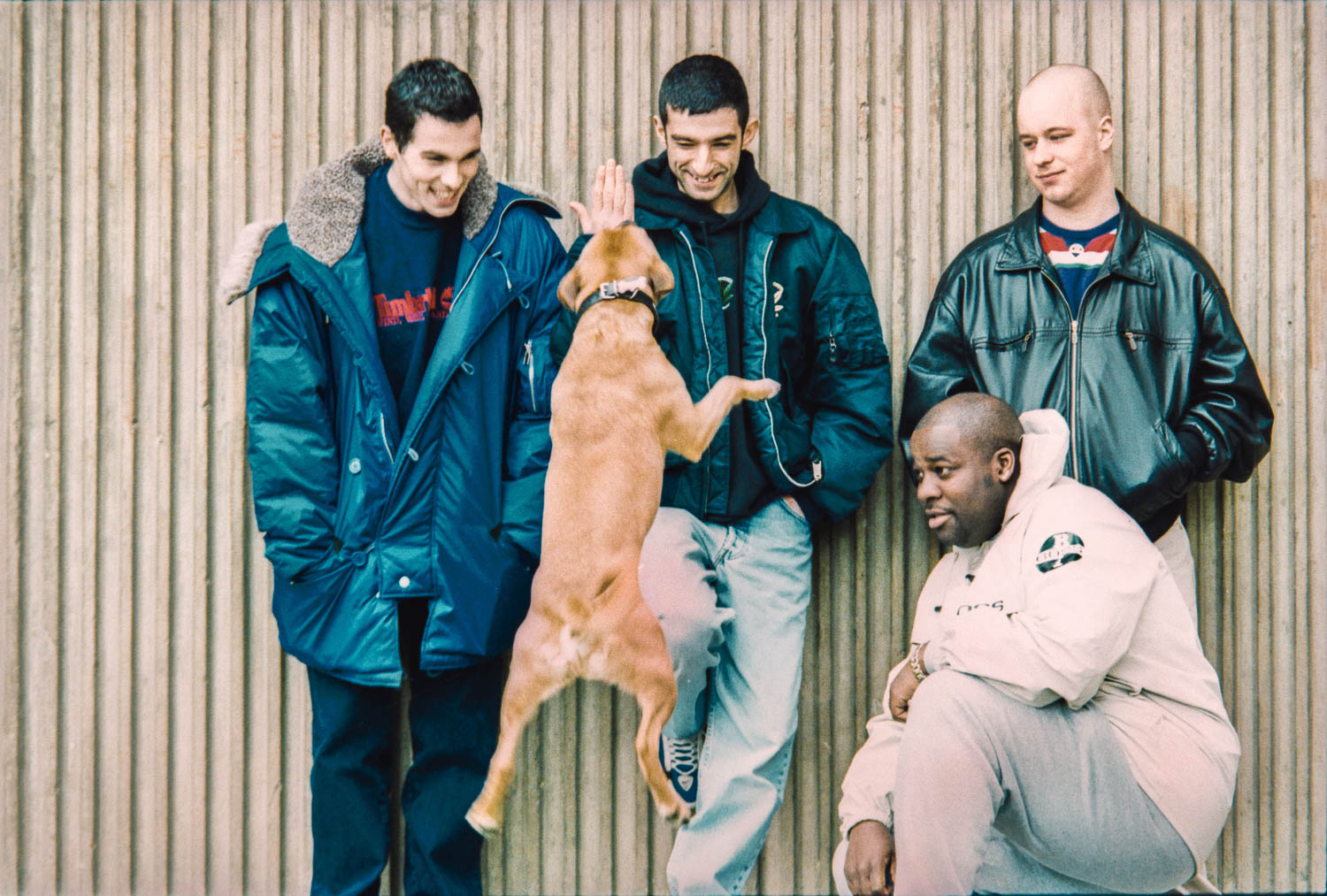
Jumping Jack Frost & Bryan Gee
Jumping Jack Frost and Bryan Gee were highly influential figures in the Drum and Bass and Jungle music scene in the 1990s. They have had a lasting impact on D&B scene and play a significant role in establishing and promoting the genre globally. It was great to recently catch up with Frost 25 years later.
Their collaboration through V Recordings helped launch the careers of major artists like Roni Size, Krust, and DJ Die. They also pioneered the darker, jazz-influenced “Bristol Sound”.
I caught up with DJ Frost again recently for another shoot ….. nearly 30 years have shot past and D&B is still going stronger than ever!
Omni Trio
Omni Trio – known for pioneering the “intelligent” or ambient Drum and Bass sound in the ‘90s and one of the original D&B producers associated with the influential record label Moving Shadow.
When I photographed him, he asked me to make him look as unrecognizable as possible. So I taped four Polaroid 55 negatives together, managed to get them to fit in the enlarger head, and developed using a sponge to get this effect.
Photek, Adam F, No-U-Turn and A Guy Called Gerald
I remember going to Photek‘s studio in his house in Hertfordshire and the amount of time he spent pouring through manuals. I didn’t even own a computor at this point in my career let alone understand how you could create music with one.
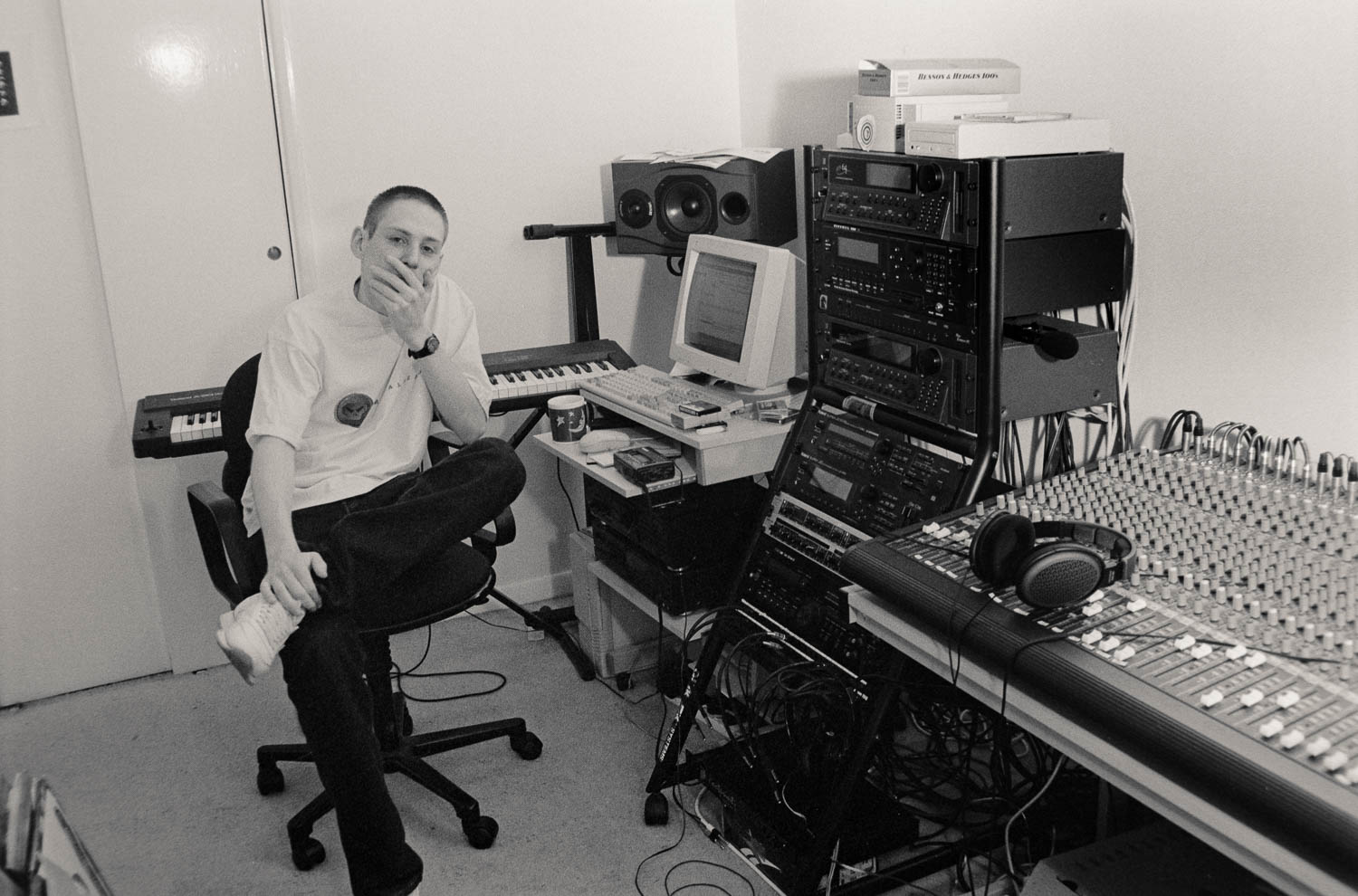
This was a session with Adam F for the release of “F Jam“. It was smooth, jazzy, and soulful track….. it’s still one of my favourite D&B records and still feel honoured to have got the white label from him that night.
This image of Adam F was shot very late at night shoot with a tight turnaround on the images. I used Polapan 35mm film which was an instant B&W transparency film. It looked great but was an absolute nightmare to work with as it scratched and marked incredibly easily after processing, then needed to be placed in glass slide mounts to make it safe….. I liked how it messed up it could looked when it went a bit wrong but most importantly I had images almost straight away.
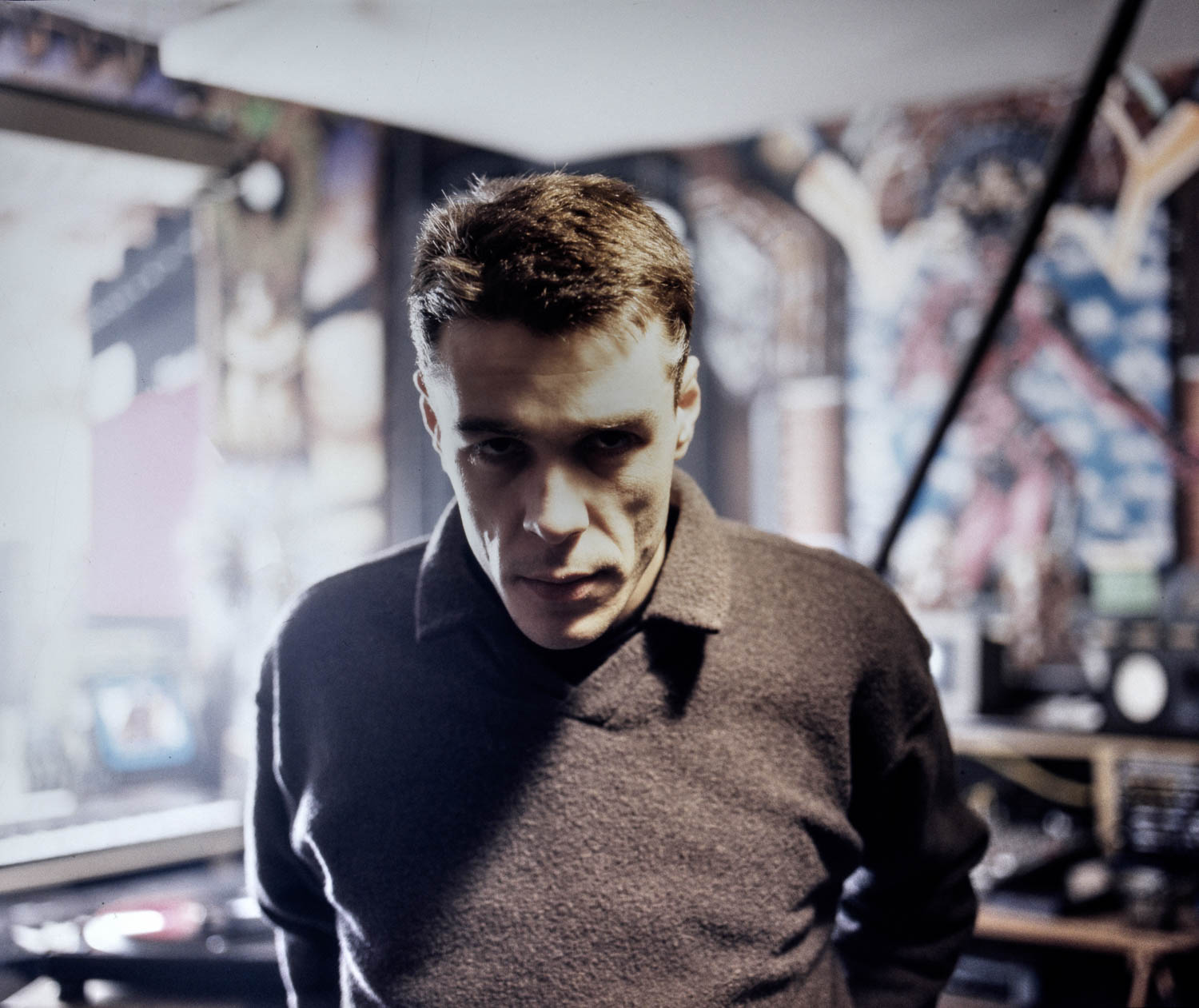
Nico Sykes of No U-Turn, the D&B label and studio which developed progressively darker Jungle sounds in the mid-90s that evolved into some of the darkest techstep.
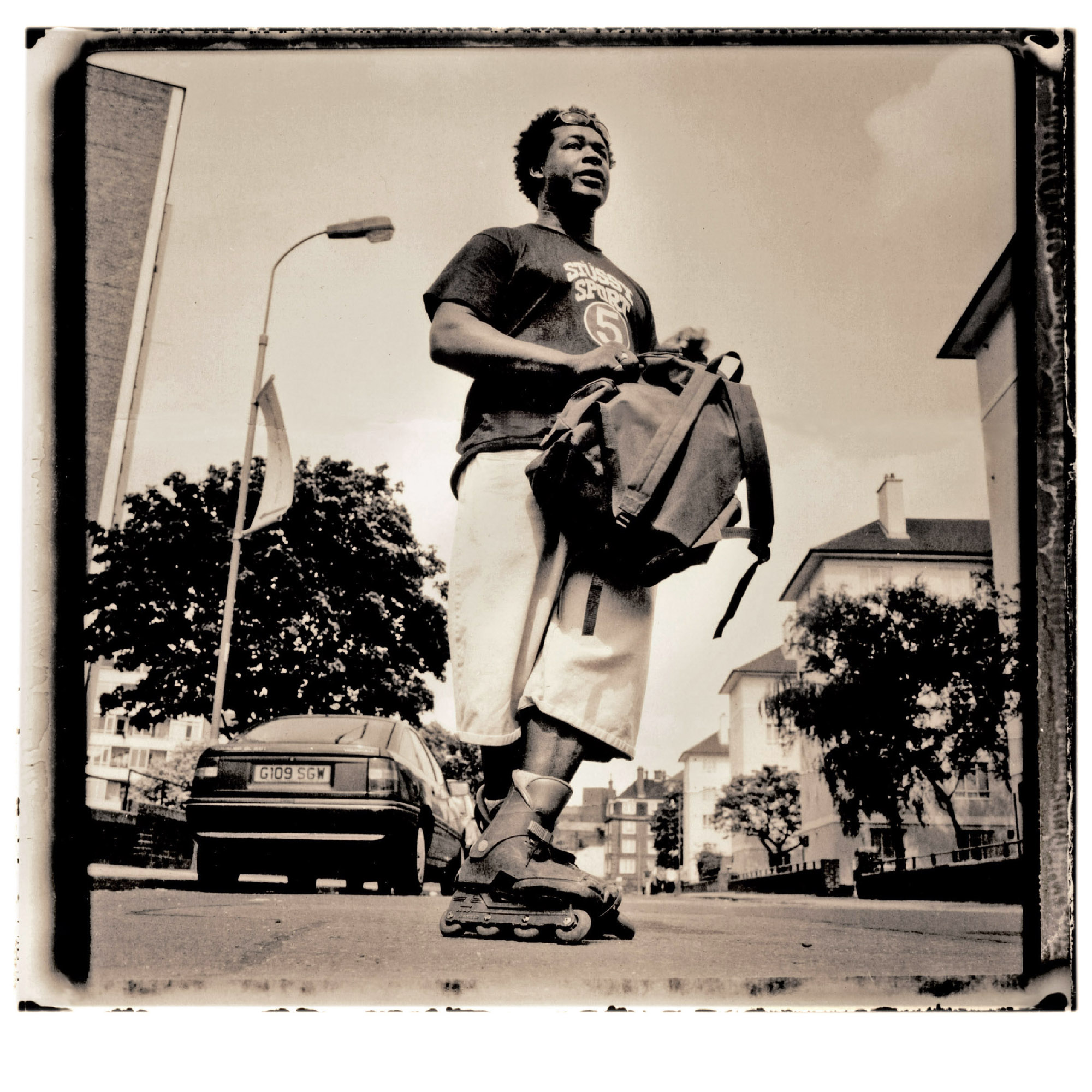
Lith print from Polaroid 55negative of A Guy Called Gerald shot on the streets of West London to promote the release of “Black Secret Technology“ which is considered to be one of the best jungle albums ever.
Photographing Drum & Bass Was About Capturing More Than Just Music
When I look back at photographing the early Drum and Bass scene, I realise it was never just about the musicians and DJs, it was about documenting and being a part of London’s underground musical history. The images I’ve held onto may only be fragments, but together they help tell the story of a sound that built itself outside the mainstream, reshaped electronic music, and eventually carried that incredible energy across the world.
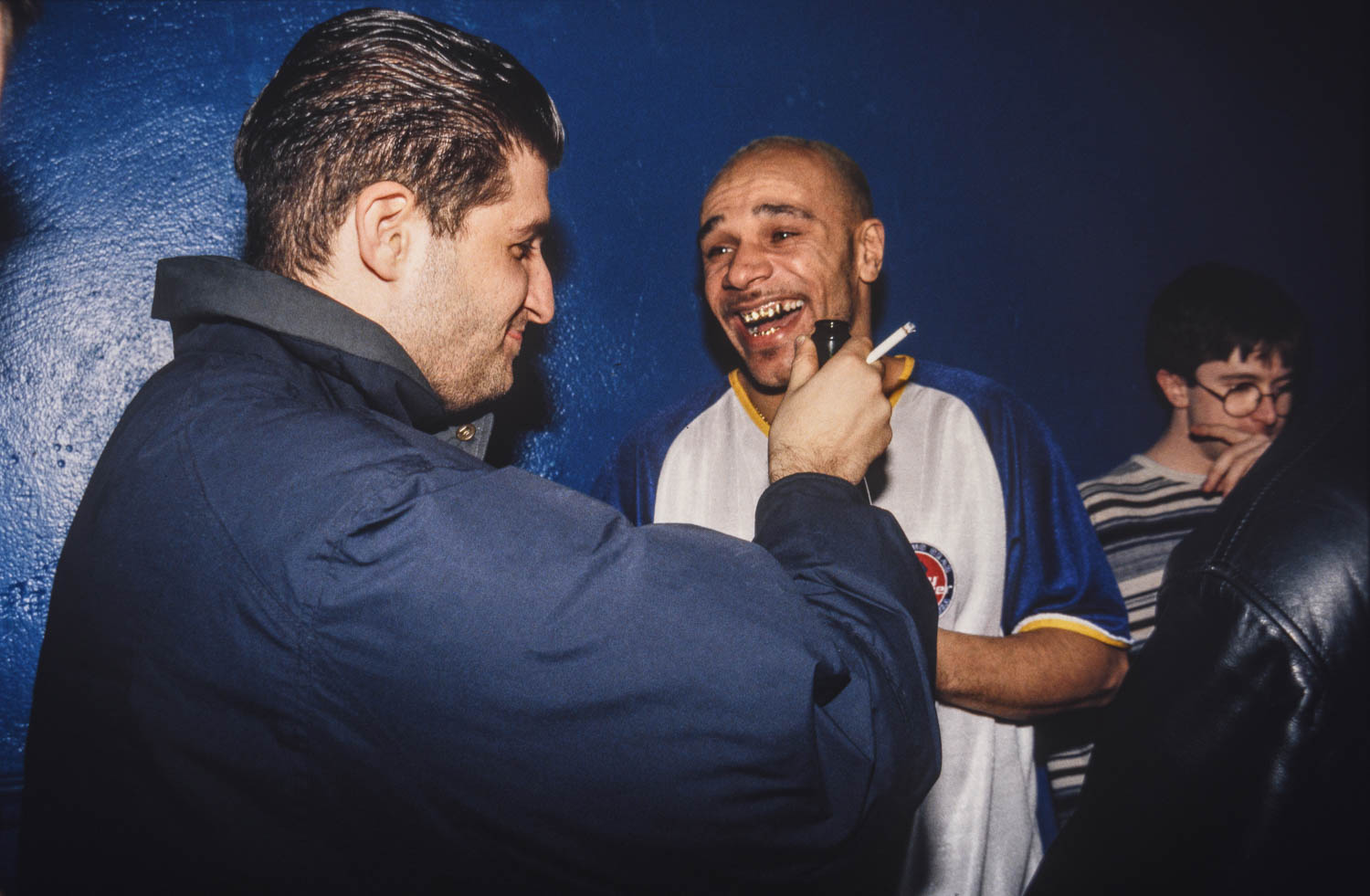
Categorised in: Uncategorized
This post was written by Colin
I’m incredibly grateful for the kind words my clients share about their experiences, and hearing such positive feedback about my photography and the results I deliver is truly rewarding. I strive to make every shoot not just productive but also enjoyable. I love listening to my clients’ ideas, adding my creative input, and working together to create great images.
I’d love to hear from you!
Or give me a ring if you’d like
01225 329069

